by Steve Selden | May 27, 2015 | Churchill News
In 1976 the Churchill River water flow was diverted into the Nelson River at Missi falls at the mouth of South Indian Lake. This diversion, caused the Churchill River to have 15% of the original flow and created controversy stemming mainly from Cree and aboriginal groups concern over their native lands resources.
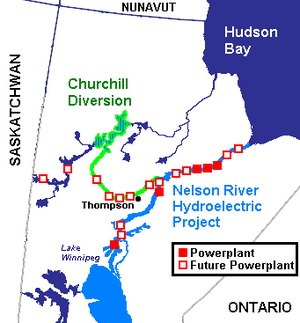
Affects on wildlife habitat and communities along the river to the north have never been adequately measured so affects on fish and the beluga whale population are relatively unknown. In Churchill, a weir and marina was constructed as part of the mitigation process by Manitoba Hydro. Although the observation tower the marina gives a nice view of the inlet off the river, the marina gets minimal usage. The weir allows the regulation of water levels south of that point for fishing and boating excursions. The beluga whale population ventures shorter distances up-river in summertime due to the tidal flow and shallow water. This might have had some affects on the population or it may have caused some whales to change habitat location and venture to other estuaries with warm rivers flowing into them. When belugas give birth and nurture their young they have an easier time with the moderate temperature warm waters flowing from the south.

Observation tower at the Churchill marina. Steve Selden photo.
I can’t imagine what the flow of the Churchill River would be like at 85% more pressure. Guiding over a decade of Churchill Arctic summer seasons I have experienced just about every type of conditions on the river and in the Hudson Bay. Although higher water flow would not have a profound affect within the main part of the river, the mouth and inlets would be very different at tidal changes. It’s very tricky at times to maneuver through the mouth of the river due to the currents and topography below. With more flow this could be easier or harder but would most likely have a bearing on fish and whales. Inlets and calving/ nurseries would be larger and deeper farther up-river…that is a surety.
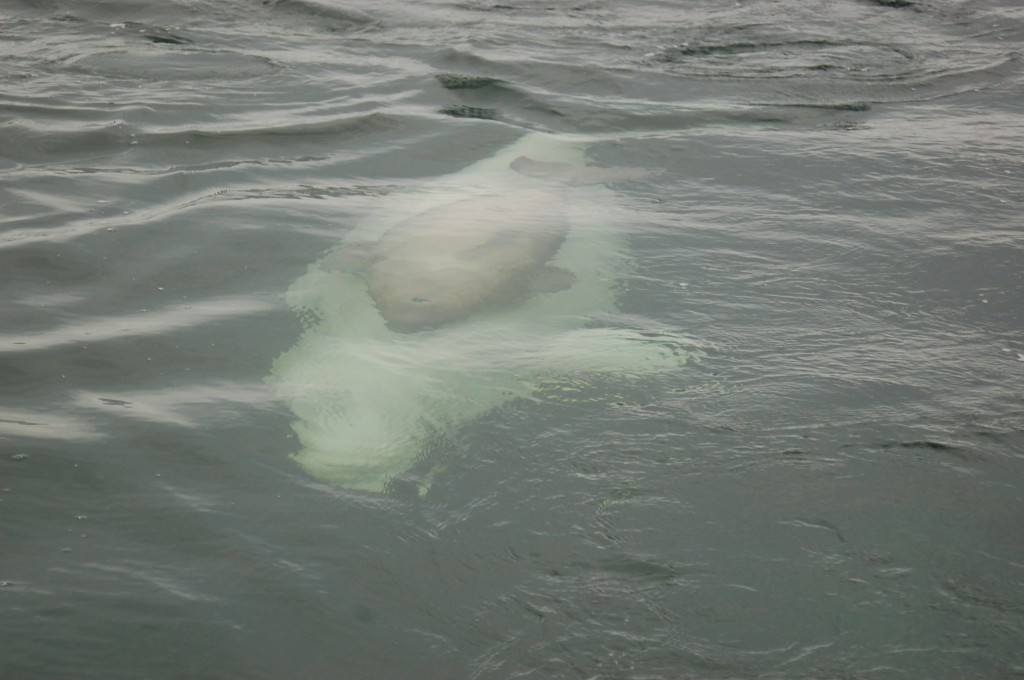
A baby calf beluga swimming in his mother’s slipstream to stay close. Steve Selden photo.
The affects on southern communities associated with the diversion have been quite harmful in many instances. South Indian Lake was forced to relocate and has since lost most of their original one million pound whitefish production…down to 100,000 pounds at last count.In the end, the benefits of the diversion and Nelson River power plants output have not been without issues. Having to ship the power to far southern communities has taken more resources and money than originally planned. The original water levels negotiated by Manitoba hydro have been disregarded and a push to adopt the newer levels by law is underway. One has to wonder, as with all these massive projects that alter our natural environment, are the benefits worth the effects felt by our wildlife populations?
by Steve Selden | May 26, 2015 | Churchill News
The Metis Heritage Hall in Churchill burned to the ground early this morning. All was lost in the fire including a vast collection of art and historical artifacts. The loss is truly devastating. Mrtyle de Meulles had stored her large collection of Metis artifacts used in her cultural talks and presentations. Unfortunately many of these items are irreplaceable. Our thoughts and prayers are with the people of Churchill and their terrible loss.

Fire response at Metis hall in Churchill. Rhonda Reid photo.

Fire destruction of Metis Hall in Churchill. Rhonda Reid photo.

Myrtle de Meulles in metis Hall. Metis Heritage photo.
by Steve Selden | May 25, 2015 | Churchill Photography
Happy Memorial Day! Enjoy these fantastic polar bear images from Churchill and have a great holiday!

Polar bears sparring in the Churchill Wildlife Management Area. Natural Habitat Adventures photo.

A telephoto lens enables the photographer to get in close. Natural Habitat Adventures photo.

Hudson Bay helicopter lifting off with a cargo of polar bears. Natural Habitat Adventures photo.

Two coy frolick in the willows. Colby Brokvist photo.

Polar bear greeting travelers. Natural Habitat Adventures photo.
by Steve Selden | May 24, 2015 | Churchill Photography
I thought it would be fun to post three photos from Churchill…one wildlife image from air, land and sea. Churchill’s diversity is immense from season to season and you quite honestly never know what you will experience from trip to trip. It’s always an amazing wildlife adventure in Churchill’s untamed frontier!
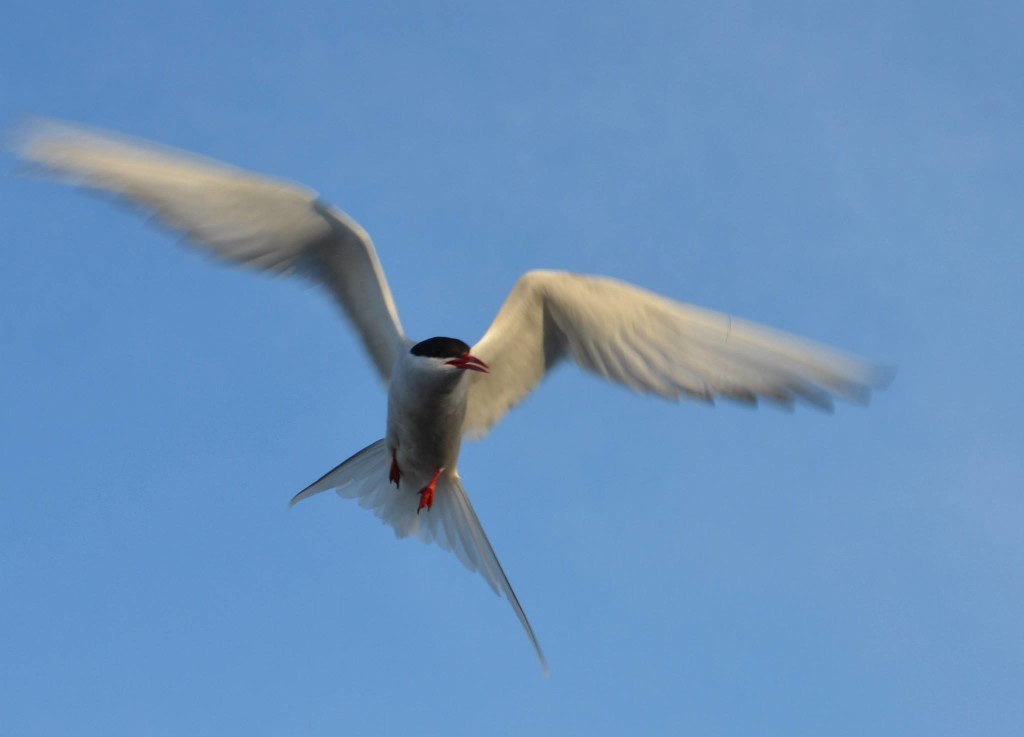
Arctic tern hovers above the Churchill River in Churchill,MB. Rhonda Reid photo.
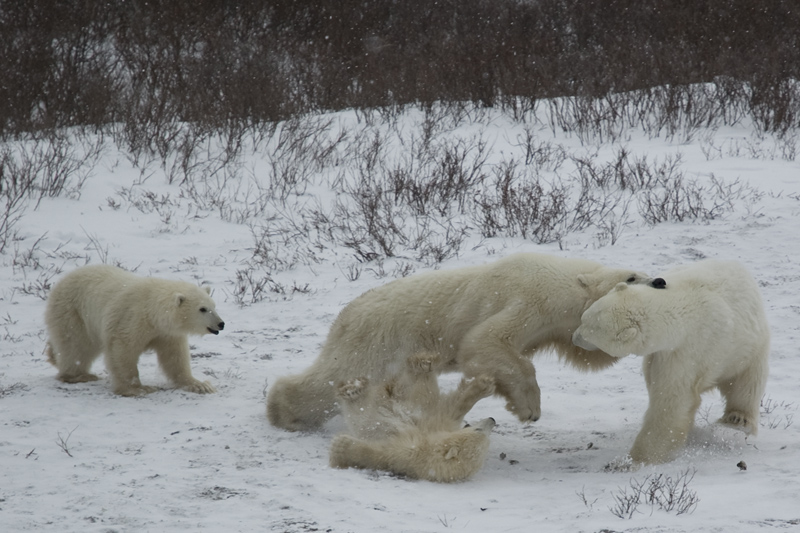
Polar bears in aggressive mode. Curtis Bouvier photo.
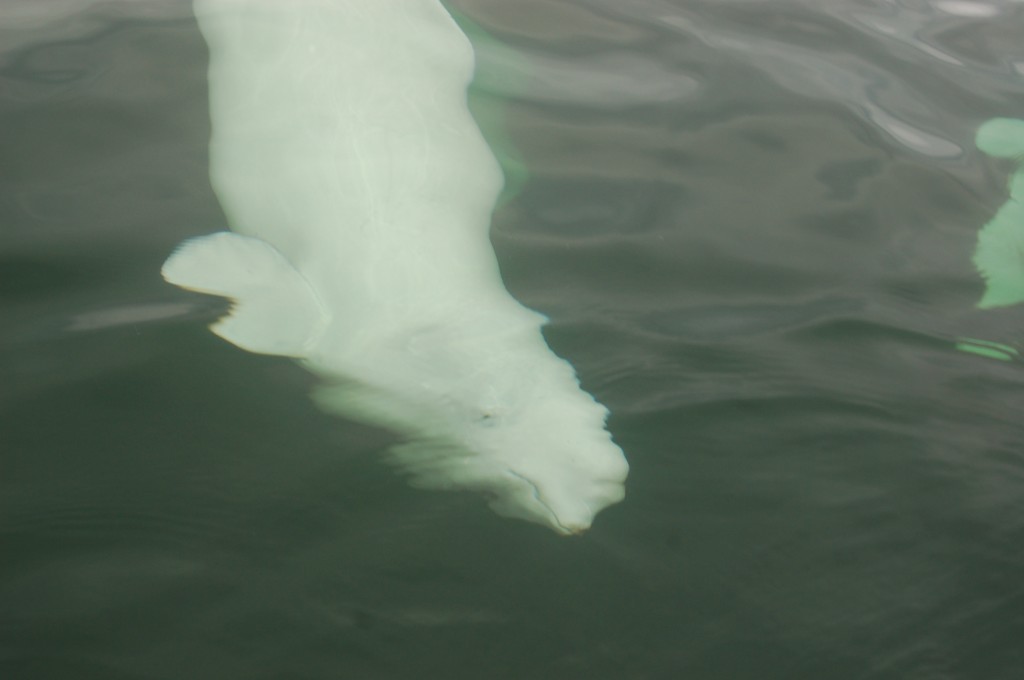
Beluga looking curiously up from the Churchill River. Steve Selden photo.
by Steve Selden | May 20, 2015 | Churchill News
When I was guiding Churchill Arctic Summer trips for Natural Habitat Adventures with local birding expert Bonnie Chartier, one common goal we always strived for was spotting the elusive and rare Ross’s gull.
The bird, named after the famed Arctic explorer James Clark Ross, has a signature black – necklaced stripe around its’ neck and would randomly appear out of the mist on the Churchill River along the flats to the east of the grain port. This was a nesting ground confirmed by researchers since around 1980. In fact I cannot remember ever seeing the prized bird anywhere else in Churchill. Northern Siberia still exists as the gull’s predominant breeding grounds with seasonal homesteading along the Arctic Ocean’s ice pack.
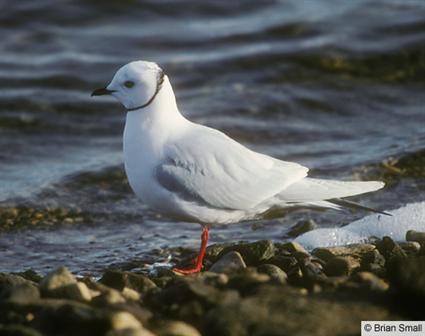
Ross’s gull along the gravelly shore. Brian Small photo.
Bonnie Chartier is world renowned for being an expert on the birds of the Churchill region and has a published guidebook (out of print at present) called A Birders Guide to Churchill. We would bring the entire group down to the Churchill River banks by the port and have all looking through binoculars, scanning the water and gravelly flats for smaller gulls with that distinct black stripe around the neck. Another distinguishing mark we always looked for was a rosy – washed colored underbelly.
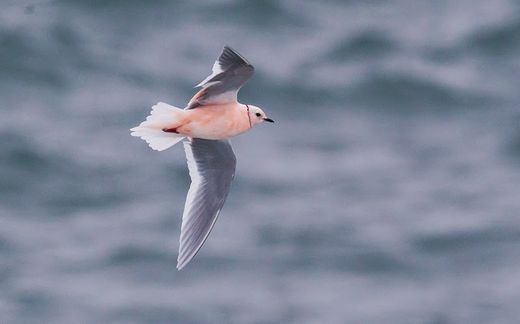
Ross’s gull in flight. Bruce Mactavish photo.
A funny occurrence at the outset of a trip happened just along the stretch of road near the port and flats. Our group of 10 or so was searching the shallows and distant Churchill River for the gull when a independent couple just next to us had a set up a tripod with a spotting scope. They had in their possession a copy of Bonnie’s book and were in dire need of finding this prized bird for their “lifelist”. They began asking Bonnie if she knew anything about the bird and it’s whereabouts in Churchill when she subtly revealed whom she was and that the book they had was written by her. Needless to say we all had a good laugh and although no Ross’ gulls were spotted that day, the couple left with a signed copy and we all departed with a funny memory and story.

















